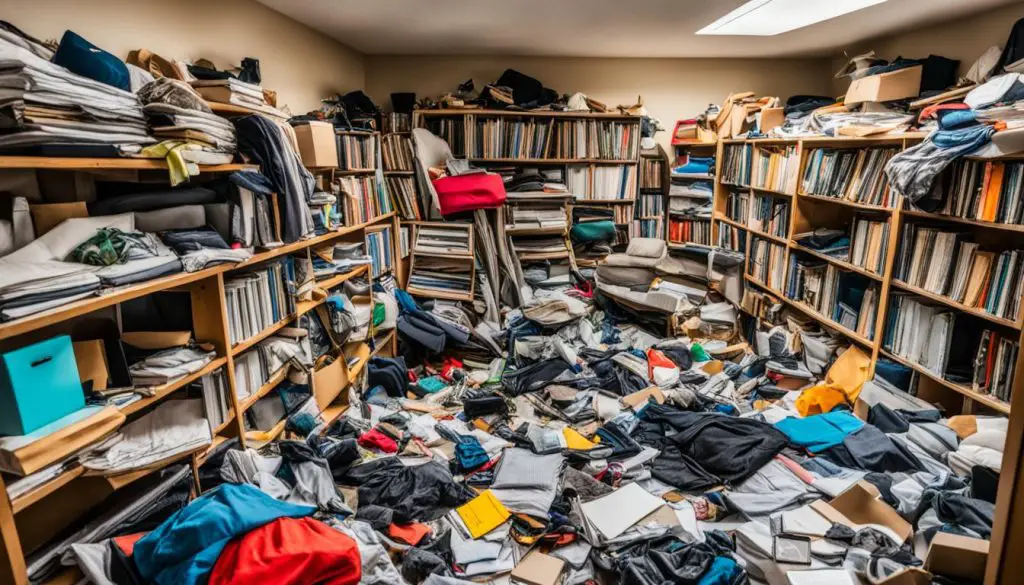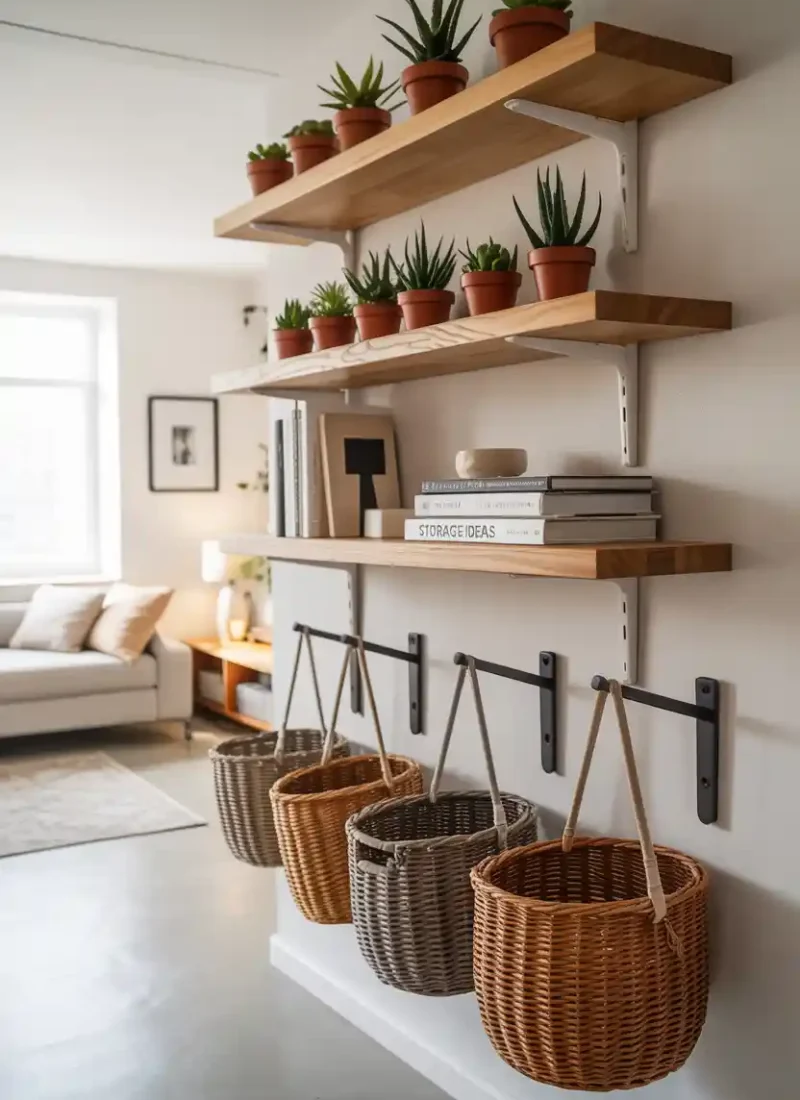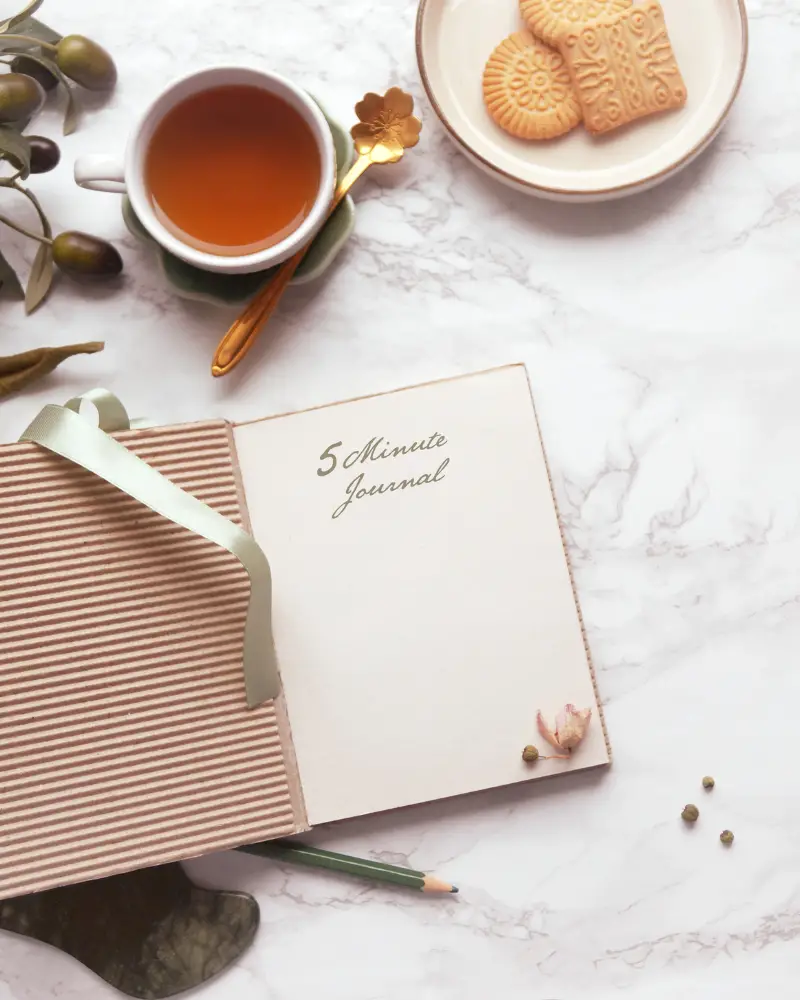Let’s be honest—most people are decluttering all wrong. They’re wasting time, getting nowhere, and their house still looks like a disaster. Why? Because they’re making the same rookie mistakes over and over again. I’ve seen it. I’ve done it. And I fixed it.
Want real results? You’ve got to know what not to do.
In this post, I’m giving you the truth—the most common decluttering mistakes that are holding you back, and exactly how to fix them. These tips? Total game-changers. You’ll save time, stay motivated, and finally see progress.
Let’s declutter like winners—no fluff, no stress, just smart strategy.
Starting a Major Decluttering Project Without a Plan
One of the biggest mistakes I made when I started my decluttering project was not having a clear plan in place. I jumped straight into decluttering without setting specific goals or creating a timeline, and it quickly became overwhelming.
Without a plan, I found myself getting easily distracted, going from one area of my home to another without completing any tasks. This lack of focus led to frustration and ultimately, a decluttering project that seemed never-ending.
Realizing my mistake, I decided to take a step back and create a decluttering plan. Having a plan not only helped me stay on track but also kept me motivated throughout the process.
In creating my decluttering plan, I first defined my goals for each area of my home. For example, in the living room, my goal was to create a more open and welcoming space by eliminating unnecessary items. In the bedroom, I aimed to declutter my closet and create a more peaceful environment.
Next, I developed a timeline for completing each task. I set deadlines for myself, ensuring that I stayed accountable and made steady progress. This helped me avoid procrastination and allowed me to see tangible results along the way.
Breaking down larger projects into smaller, more manageable steps also played a crucial role in my decluttering process. Instead of tackling my entire closet at once, for instance, I focused on one shelf or category at a time. This approach made the task feel less daunting and enabled me to see progress more quickly.
Overall, having a clear plan for my decluttering project was a game-changer. It provided structure, direction, and motivation. It allowed me to stay focused, avoid distractions, and break down the process into achievable tasks.

Getting started on a major decluttering project without a plan is like embarking on a journey without a map. By taking the time to create a decluttering plan, you can set yourself up for success and make the process smoother and more manageable.
Not Using a Sorting System While Decluttering
Another common decluttering mistake is not having a sorting system in place. Without a system for sorting items, you can easily get distracted and overwhelmed during the decluttering process. To avoid this, it’s important to implement a sorting system that helps you stay organized and focused. One effective method is the 4 box method, which involves labeling four boxes for different decluttering categories: keep, donate/sell, toss, and put away.
With the 4 box method, you can quickly and efficiently make decisions about what to do with each item. By assigning each item to its proper category, you can avoid cluttering your space with unnecessary belongings and ensure that each item finds its rightful place. Here’s a breakdown of the decluttering categories:
| Decluttering Categories | Description |
|---|---|
| Keep | Items you want to keep and make a part of your organized space. |
| Donate/Sell | Items that are still in good condition but no longer serve a purpose for you. These can be donated to charity or sold. |
| Toss | Items that are broken, damaged, or beyond repair. These should be disposed of properly. |
| Put Away | Items that belong in a different area of your home. Set them aside to be organized in their proper place later. |
By following this sorting system, you can make decluttering a more structured and efficient process. It helps you make decisions quickly, reduces the chances of second-guessing, and keeps you focused on your decluttering goals. So, don’t skip the sorting step—implement a system that works for you and declutter with ease.
Hanging On to Donate/Sell Items Too Long
When decluttering, it’s common for people to hold on to items they plan to donate or sell for longer than necessary. This mistake can hinder your decluttering progress and even lead to bringing those items back into your living space. If you’re looking to create a clutter-free home, it’s important to get rid of donation and sell items as soon as possible.
Storing unwanted items in the garage or another area of your home not only takes up valuable space but also creates a mental burden. These items can weigh you down and hinder your decluttering efforts. To maintain your decluttering momentum, it’s essential to take action and let go of these items in a timely manner.
If you have items you plan to donate, make it a priority to get them out of your home as soon as possible. One effective strategy is to place the donation boxes in your car and drop them off at a local donation center or charity the next day. By scheduling this task and following through with it, you can move forward with your decluttering journey.
If you’re planning to sell items, set a firm date for a garage sale or online listing and ensure that you follow through with the sale. This not only helps you declutter but also allows you to make some extra money from items you no longer need.
Remember, the longer you hold on to donate or sell items, the more they can impede your decluttering progress. By taking prompt action and getting rid of these items, you can maintain a clutter-free and organized living space.
Tips for Getting Rid of Items Promptly
- Create a specific timeline for getting rid of donation and sell items.
- Place donation boxes in your car and drop them off at a local charity within a specific timeframe.
- Set a firm date for a garage sale or online listing and follow through with the sale.
- Consider alternative options, such as donating to local shelters or organizations in need.
- Remember the benefits of a clutter-free home, including reduced stress and improved organization.
| Pros | Cons |
|---|---|
| Creates a clutter-free living space. | May require time and effort to find appropriate donation centers or organize a garage sale. |
| Allows you to donate to those in need or make some extra money by selling items. | May experience sentimental attachments to certain items, making the decluttering process more challenging. |
| Prevents items from taking up valuable space in your home. | May need to gather relevant paperwork for tax deductions if donating to a registered charity. |
🚫 Mistake: Organizing Before You Declutter
Biggest trap ever. You’re not organizing—you’re just rearranging clutter. Don’t do it.
Here’s why this backfires:
- 🧺 You end up organizing stuff you don’t even want.
Sorting expired coupons, broken cables, clothes you’ll never wear again? Waste of time. - 💸 You waste money on bins and baskets you don’t actually need.
You think you’re solving the problem—but you’re just decorating your clutter. - 😵💫 It creates the illusion of progress… with zero real change.
Everything looks “neater” for 2 minutes, then chaos creeps back in.
✅ What to Do Instead:
- Start with a ruthless declutter.
Ask: Do I use this? Do I need it? Do I even like it? - Sort first, then store.
Use the keep/donate/toss method or the 4-box system to stay focused. - Wait to buy organizing products.
Once you know what’s staying, then choose bins and systems that actually fit your stuff—and your space.
Remember: You can’t organize clutter. You can only hide it. Declutter first, then organize what truly matters.
Decluttering versus Organizing: What’s the Difference?
Decluttering and organizing are often used interchangeably, but they are two distinct processes with different goals.
Decluttering involves sorting through your belongings and getting rid of items that no longer serve a purpose or bring you joy. It’s about letting go of the physical and emotional clutter that weighs you down. When you declutter, you make space for what truly matters to you and create a more organized and harmonious living environment.
Organizing, on the other hand, is about finding a place for the items you choose to keep. It involves creating systems, establishing order, and maximizing the efficiency of your space. Organizing helps you maintain a tidy and functional home, but it’s only effective when there is a minimal amount of clutter to organize.
Remember, decluttering comes first. Focus on removing the excess and deciding what truly adds value to your life. Once you have decluttered, you can then organize your remaining belongings in a way that makes sense for you.
| Decluttering Tactics | Benefits |
|---|---|
| Start with one area or room at a time | Prevents overwhelm and allows for focused decluttering |
| Sort items into categories (keep, donate/sell, toss) | Makes decision-making easier and helps prioritize |
| Set realistic goals and timelines | Keeps you motivated and provides a sense of accomplishment |
| Challenge yourself to let go of sentimental items | Creates space for new experiences and reduces emotional clutter |
| Seek support from friends or a professional organizer | Provides guidance, accountability, and encouragement |
Trying to Declutter Everything All At Once
One of the most common decluttering mistakes is trying to tackle everything at once. Decluttering can be overwhelming, and trying to do it all in one go can lead to burnout and frustration. Instead, it’s important to break your decluttering process into smaller, more manageable steps that align with your decluttering goals and time frame.
Prioritize areas in your home and focus on one room or space at a time. By taking things one step at a time, you’ll be able to maintain motivation and make steady progress. Start with a manageable goal, such as decluttering your closet or organizing your kitchen cabinets. Take the time to sort through items, asking yourself if they serve a purpose or bring you joy. It’s okay to let go of things that no longer serve you.
Remember, decluttering is a journey, not a destination. It’s important to be realistic about how much time it will take to declutter your entire home. Set achievable milestones and celebrate your progress along the way. By taking a systematic approach and breaking your decluttering process into manageable steps, you’ll avoid decluttering overwhelm and create a more organized and peaceful living space.
Benefits of Decluttering in Manageable Steps:
- Reduced overwhelm: Breaking down the decluttering process into manageable steps prevents you from feeling overwhelmed and gives you a clear focus.
- Motivation: By achieving small decluttering goals, you’ll stay motivated and inspired to continue the decluttering journey.
- Efficiency: Taking things one step at a time allows you to declutter more efficiently, making better decisions about what to keep and what to let go of.
- Sustainable habits: By establishing a decluttering routine and tackling tasks in manageable steps, you’ll develop sustainable habits that keep your space organized in the long run.
- Sense of accomplishment: Celebrate each milestone and acknowledge your progress along the way to maintain a positive mindset and sense of accomplishment.
Getting Wrapped Up in the Sentimental Items
When it comes to decluttering, dealing with sentimental items can often pose a significant challenge. Many of us find it difficult to let go of items that hold emotional value, leading to cluttered spaces and an inability to create room for new experiences. While it’s essential to honor and cherish memories, it’s equally important to maintain a clutter-free home for our overall well-being.
When facing sentimental items, it’s crucial to take a moment to reflect on why they hold such emotional attachments. Consider the memories associated with the item and evaluate whether it still serves a purpose in your life. Is this item bringing joy and adding value to your present or future? Letting go of sentimental items does not mean erasing memories; instead, it allows you to create physical and mental space for new moments and experiences.
One practical approach to decluttering sentimental items is to capture their essence through photography. By taking a photo of the item, you can preserve the memory without the need to keep the physical object. This allows you to honor the sentimentality while decluttering your space. Remember, it’s the memories and emotions attached to an item that matters, not the item itself.
“Letting go is hard, but holding on is harder. Embrace the memories, release the physical attachments, and make space for new beginnings.”
In summary, navigating sentimental items during the decluttering process can be challenging, but it’s essential to strike a balance between honoring memories and creating a clutter-free home. Reflect on the emotional significance of each item, consider letting go if it no longer serves a purpose, and capture memories through photography. By doing so, you can create a space that is both physically and emotionally liberating.
Tips for Letting Go of Sentimental Items
- Take a photo of the sentimental item to preserve the memory without keeping the physical object.
- Focus on the memories and emotions associated with the item, rather than the item itself.
- Evaluate whether the sentimental item still serves a purpose in your life.
- Consider how holding onto the item may be hindering your decluttering progress and creating unnecessary clutter.
| Pros | Cons |
|---|---|
| A clutter-free space promotes mental clarity and reduces stress. | Letting go of sentimental items can be emotionally challenging. |
| Creating physical space allows for new experiences and opportunities. | There may be guilt or fear of forgetting the past associated with letting go. |
| Preserving memories through photography maintains sentimental value without the need for physical clutter. | Some sentimental items may have financial value, leading to reluctance in letting go. |
Attaching a Monetary Value to Your Clutter
When decluttering, it’s common to struggle with letting go of expensive items. After all, we naturally associate the purchase price with their worth. However, it’s vital to shift our mindset and recognize that the money spent is already gone. Holding onto these items may be costing us more than we realize, both physically and mentally.
Instead of focusing on the purchase price, consider the cost of keeping these expensive items. Think about the valuable space they occupy in your home and the energy required to manage and maintain them. By letting go of these items that no longer serve a purpose, you can create a more streamlined and clutter-free living environment.
Remember, decluttering is not just about getting rid of physical belongings, but also about freeing yourself from the mental weight of clutter.
Letting go of expensive items allows you to prioritize what truly matters and create a space that supports your goals and well-being. Embrace the liberation that comes with decluttering and enjoy the benefits of a clutter-free home and mind.
FREE Easy 15-Minute Weekly Checklist to Keep Your Home Organized
Stay on top of your decluttering efforts with an easy to use cleaning checklist! Spend just 15 minutes a day tidying up in designated areas to help cut down on the clutter and chaos. With 2 versions to choose from, you can use our daily suggestions or create your own!

Download it now for FREE and use it as a printable or digital checklist.
FAQ
What are some common decluttering mistakes to avoid?
Common decluttering mistakes include not having a clear plan, not using a sorting system, holding onto donation/sell items too long, trying to organize before decluttering, trying to declutter everything all at once, getting wrapped up in sentimental items, and attaching a monetary value to your clutter.
How can I avoid starting a major decluttering project without a plan?
To avoid this mistake, create a decluttering plan with specific goals and a timeline for each area of your home. Break down larger projects into smaller, more manageable steps to stay focused and motivated.
What’s the importance of using a sorting system while decluttering?
Using a sorting system, such as the 4 box method (trash, put away, donate/sell, store), allows you to quickly and efficiently make decisions about each item. It helps you stay organized and focused during the decluttering process.
How can I prevent myself from holding onto donate/sell items for too long?
To avoid this mistake, get rid of donation/sell items as soon as possible. If you’re donating, put the boxes in your car and drop them off the next day. If you’re planning a garage sale, set a firm date and follow through with it.
Should I organize before decluttering or vice versa?
It’s important to declutter first and then organize. Removing the clutter allows you to assess what items you truly need to organize. This approach makes the organizing process more efficient and effective.
Is it better to declutter everything at once or take it one step at a time?
It’s better to break your decluttering process into smaller, more manageable steps. Prioritize areas in your home and focus on one room or space at a time to maintain motivation and make steady progress towards your decluttering goals.
How can I let go of sentimental items while decluttering?
Reflect on why sentimental items hold emotional value for you and evaluate whether they still serve a purpose in your life. Consider taking a photo of the item to hold onto the memory without needing to keep the physical object.
How can I stop attaching a monetary value to my clutter?
Shift your mindset and focus on the cost of keeping the item, including the space it takes up and the energy required to manage it. Let go of expensive items that no longer serve a purpose to create a more streamlined and clutter-free home.



